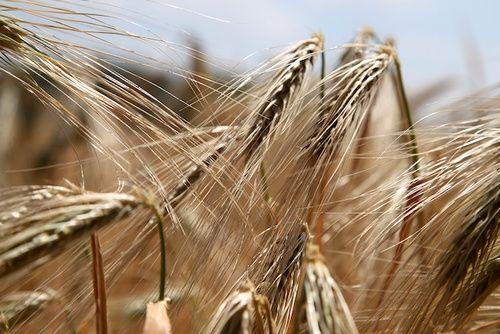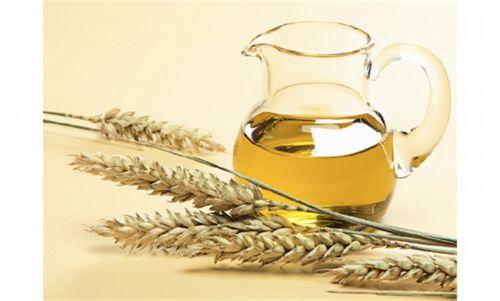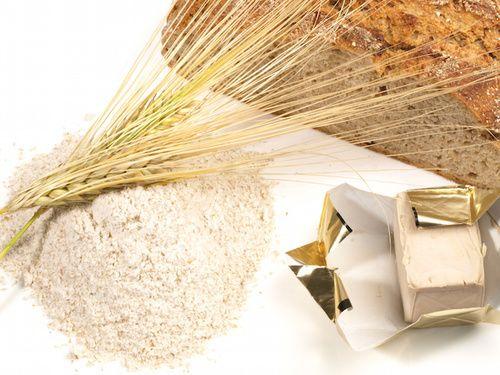Il wheat or grain has been known since ancient times (where it was called frumentum in Latin, from the verb to enjoy, to dispose of something) and still represents today, especially in temperate areas, the main source of food for humans. Let's find out better.
> 1. Description of the wheat and varieties
> 2. They say about him
> 3. Properties and benefits of wheat
> 4. Calories and nutritional values of wheat
> 5. Ally of

Wheat description and varieties
Wheat stands out in tender (Triticum aestivum) native to the Middle East from which, in the Neolithic, it spread to Europe. The cradle of origin, however, of wheat hard (Triticum durum) is Central and eastern Africa (Ethiopia).
The spread of the first wheat crops to Europe was relatively fast. Around 6000 BC, agricultural villages had consolidated along the coasts of the Aegean Sea and in the interior, but wheat had already been grown in these areas for a couple of millennia.
From Greece it passed into the country, in France and in Spain and, a few centuries later, we find it in Bulgaria and in the other Balkan countries from where it continued towards the plains further north, up to Germany (5000 BC).
For the central role that wheat has in human nutrition, for its good nutritional profile, for its ease of storage and transport, it is the most extensively cultivated in the world.
It is currently grown on all continents and world production is constantly increased in recent years, reaching 1993 million tons in 564. The increase in production is largely due to the genetic improvement work, which began at the beginning of the twentieth century using the crossing technique; more productive varieties were thus created, resistant to late attacks by rust (fungal disease) but shorter in height.
In el country the production of soft wheat is mainly concentrated in the Center-North and only partially covers the national needs (55%) while that of durum wheat is located in the Center-South and in particular in Puglia and Sicily.
Also discover the wheat germ, food and miracle oil

They say about him
The fruit of the wheat is a caryopsis (improperly called "seed") made up of external casings, From 'endosperm (formed basically by starch and protein substances, it has a floury structure in soft wheat while in hard wheat it generally has a glassy consistency) and byembryo (it constitutes a small part of the caryopsis but in its small part it contains the parts of the future plant).
The milling of the kernels produces flour (from soft wheat) or semolina (from durum wheat). According to the degree of refining, soft wheat flour can be:
- di integral type (when the wheat is ground with the outer skin membranes),
- type 1 and type 2 (they contain more parts of bran, starches and proteins but less than wholemeal),
- of type 0 (has only a small percentage of bran),
- and Type 00 (double zero, impalpable and very fine, it is without bran and very white; it comes from the grinding of the inner part of the seed only and for this reason, despite being rich in starch and proteins, it is however poor in mineral salts, vitamins and fibers).
Properties and benefits of wheat
The composition of the wheat kernel is that represented by starch (about 70%), proteins (10-20%) e lipids (about 2%). Starch and proteins are the factors that most influence the nutritional and qualitative characteristics of doughs and derived products.
An initial classification of wheat kernel proteins made by Osborne divided them into four groups based on their relative solubility: albumin, globulins, gliadins and glutenins. The latter two are found exclusively in the endosperm where they have the physiological role of reserve proteins and constitute about 80% of the total proteins.
Il gluten it is formed during processing, when the flour is mixed with water, from the union of these two proteins and has a very important function which is to form a elastic protein lattice able to bind together the hydrated starch granules and to retain the carbon dioxide bubbles that form during the fermentation of the dough; this makes leavening possible and the formation of a soft and elastic dough.
Calories and nutritional values of wheat
100 g of durum wheat contain 312 kcal / 1307 kj.
Furthermore, for every 100 g of this product, we have:
- Water 11,50 g
- Available carbohydrates 62,50 g
- Sugars 3,20 g
- 13 g protein
- Fats (Lipids) 2,90 g
- Cholesterol 0
- Total fiber 9,80 g
- Potassium 494 mg
- Iron 3,60 mg
- Calcium 30 mg
- Phosphorus 330 mg
- Magnesium 160 mg
- Zinc 2,90 mg
- Copper 0,40 mg
- Selenium 3,80 µg
- Vitamin B1 0,43mg
- Vitamin B2 0,15mg
- Vitamin B3 5,70mg
- Vitamin A 2µg
- Vitamin C 0mg
You can also find out about the properties and use of wheat flour

Wheat, ally of
The carbohydrates, more commonly referred to as carbohydrates or sugars, represent the preponderant constituent of the kernels of cereals (mainly represented by starch).
The Guidelines for a Healthy Diet in the countryside (INRAN revision 2003) establish that cereals (basically in the form of bread and pasta) must be consumed in such a way as to provide at least 55% of the calories supplied daily, since the main role of derived products of the wheat in our diet is to represent the main source of energy for our metabolism.
The presence in the diet of a share of complex carbohydrates such as starch, the intake of fiber but also of certain fats usually associated with the introduction of bread and pasta, ensures the body a prolonged supply of energy over time to avoid sudden increases in blood sugar levels, certainly not favorable to our health (peaks glycemic).
It is important to note that, for the benefits they bring to our body and our metabolism, the regular consumption of products obtained with wholemeal flours of durum wheat is related to the reduction of the risk of numerous cardiovascular diseases and contributes to the maintenance of an optimal body weight.
Curiosities about wheat
Common wheat is used in bakery, pastry, for the production of bakery products (biscuits, panettone, etc.), while durum wheat is mainly used inpasta industry but also minimally in the bread-making for the production of typical breads.
The two species of wheat have different qualitative aspects and the ability of the flour or semolina to be transformed into a specific food product according to appropriate techniques is determined by the "technological quality".
In a soft wheat with a high bread-making aptitude, gluten must be abundant and of good quality (as mentioned before, it depends on the balanced ratio of the two proteins that compose it, gliadins and glutenins).
Instead, because durum grains have a good pasta-making attitude, the gluten must be not very extensible and tenacious (it is also called short gluten); the resulting paste is thus resistant to cooking and not sticky.
It is not possible to prepare good quality pasta using soft wheat flour, since the quantity and quality of gluten is not suitable for the purpose; to produce pasta using soft wheat flour, proteins must be added, for example by using egg yolks, which compensate for the lack of gluten.
Read also
The properties of pasta, a staple food of the Mediterranean diet


























